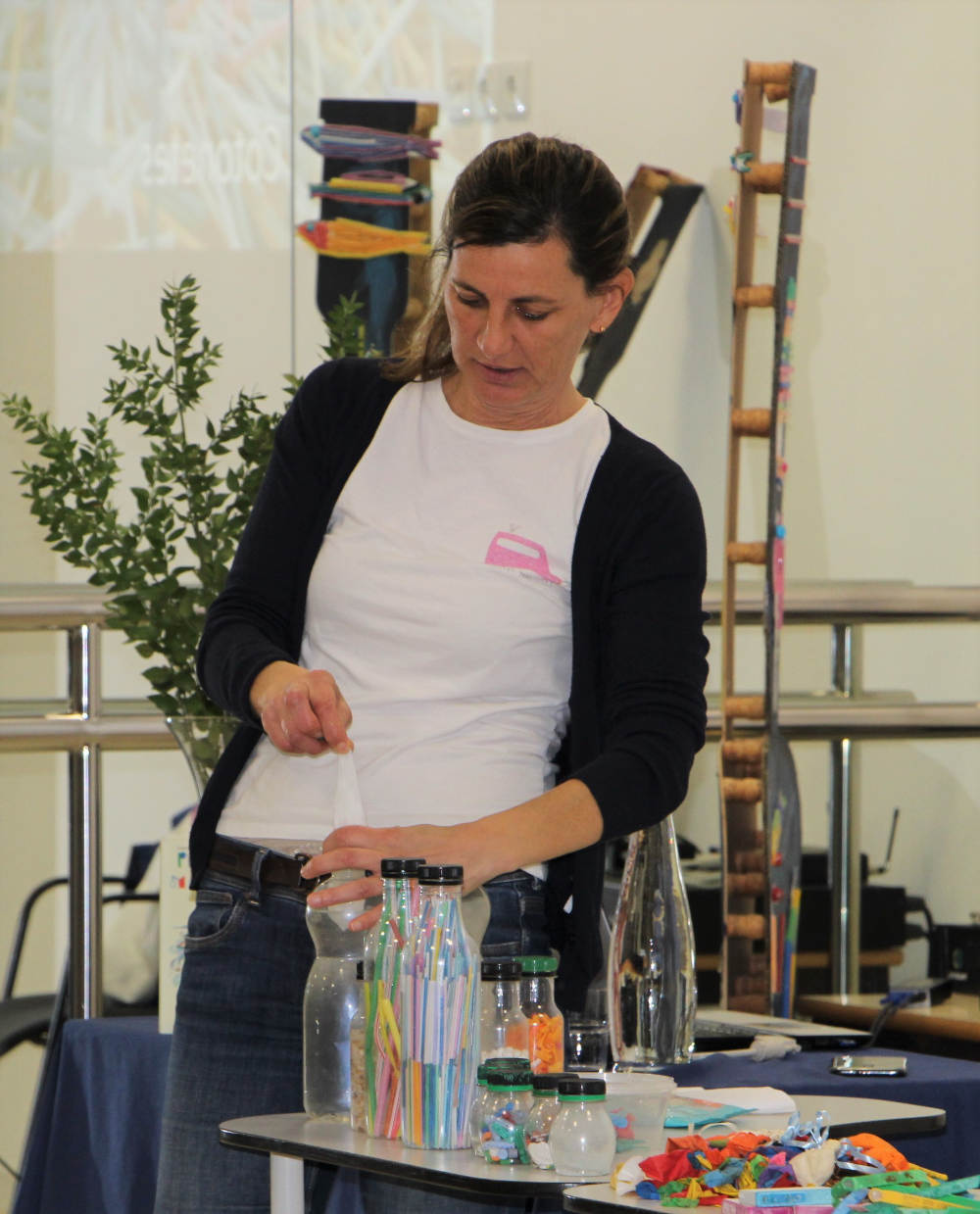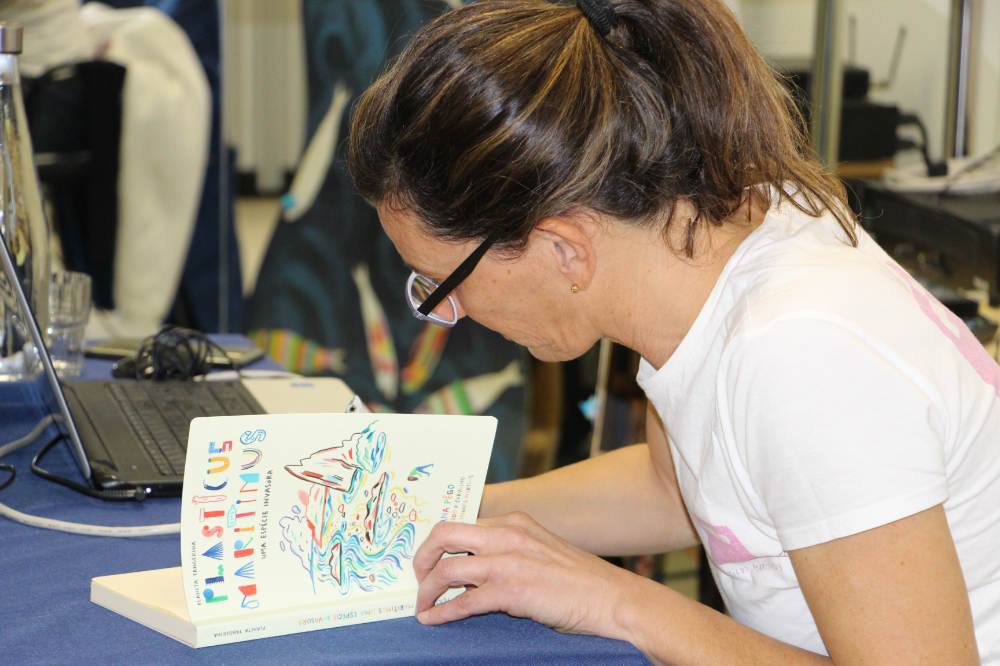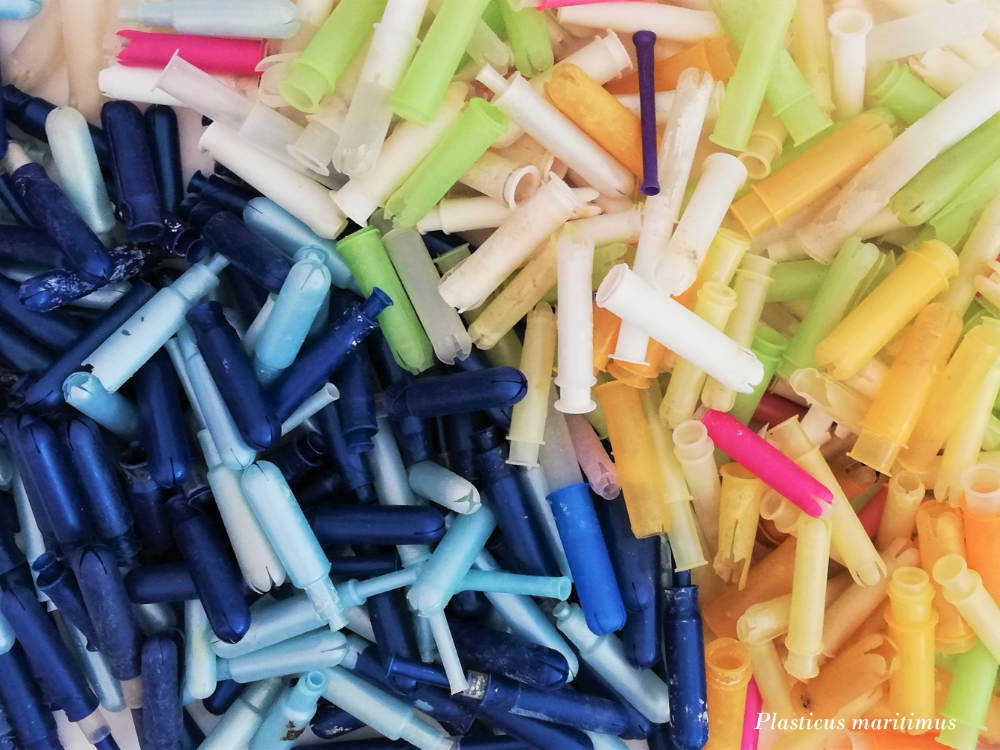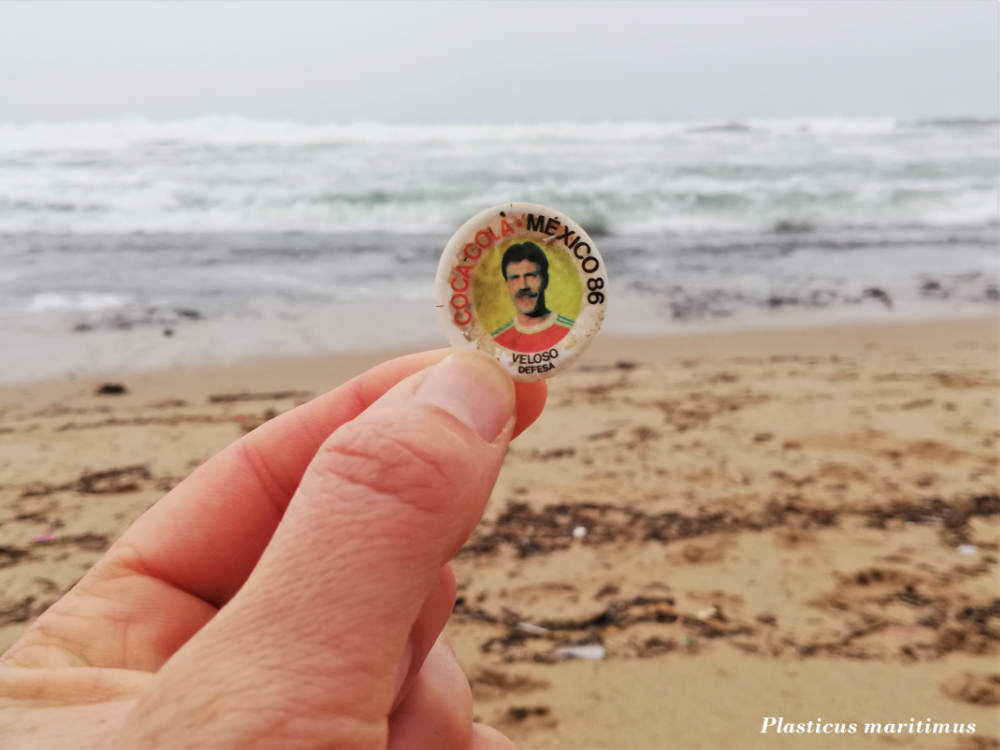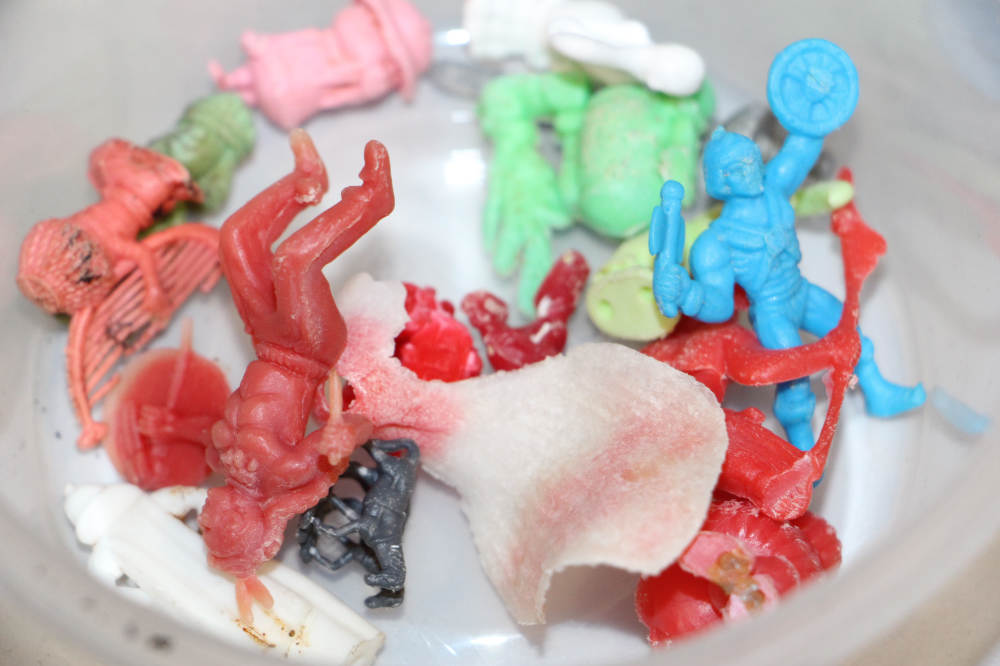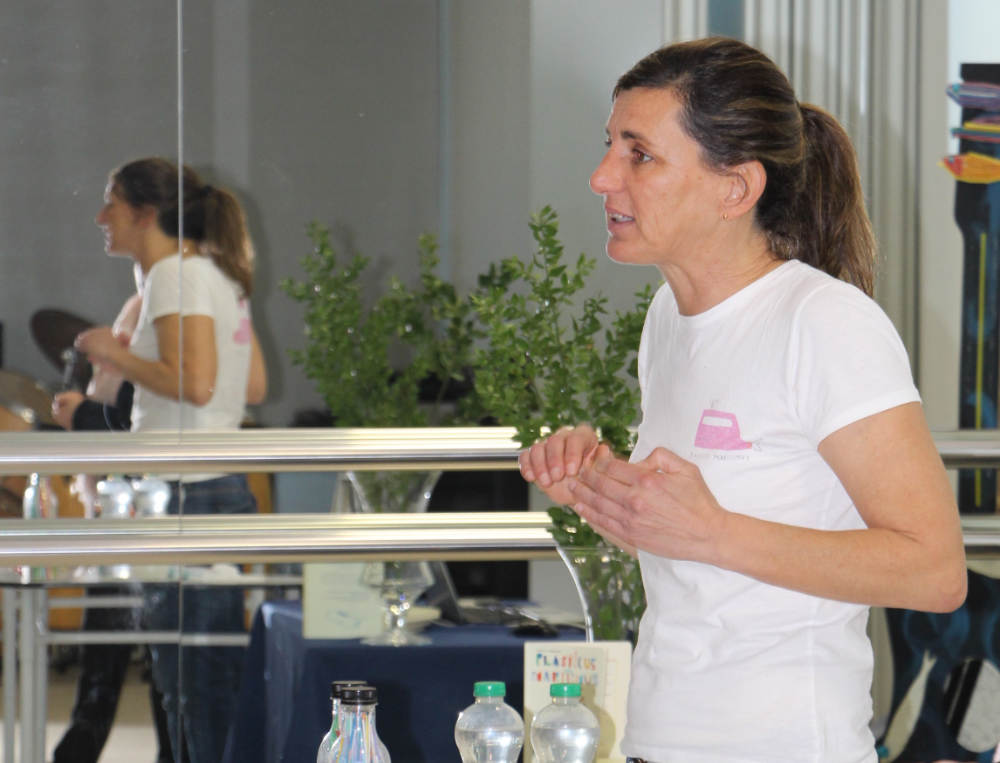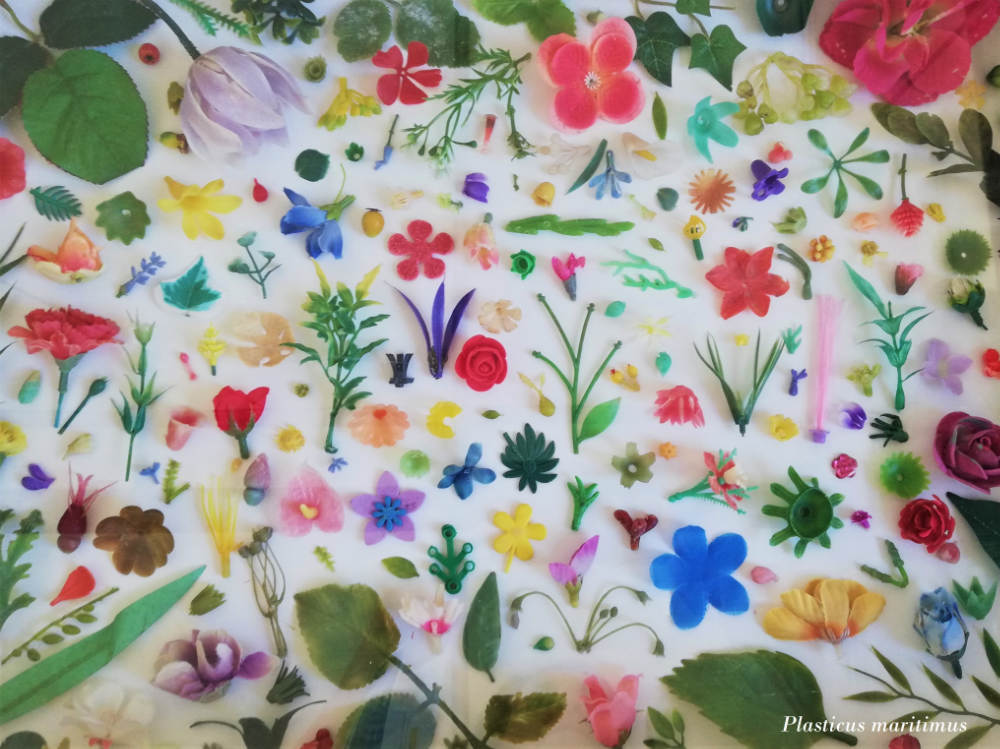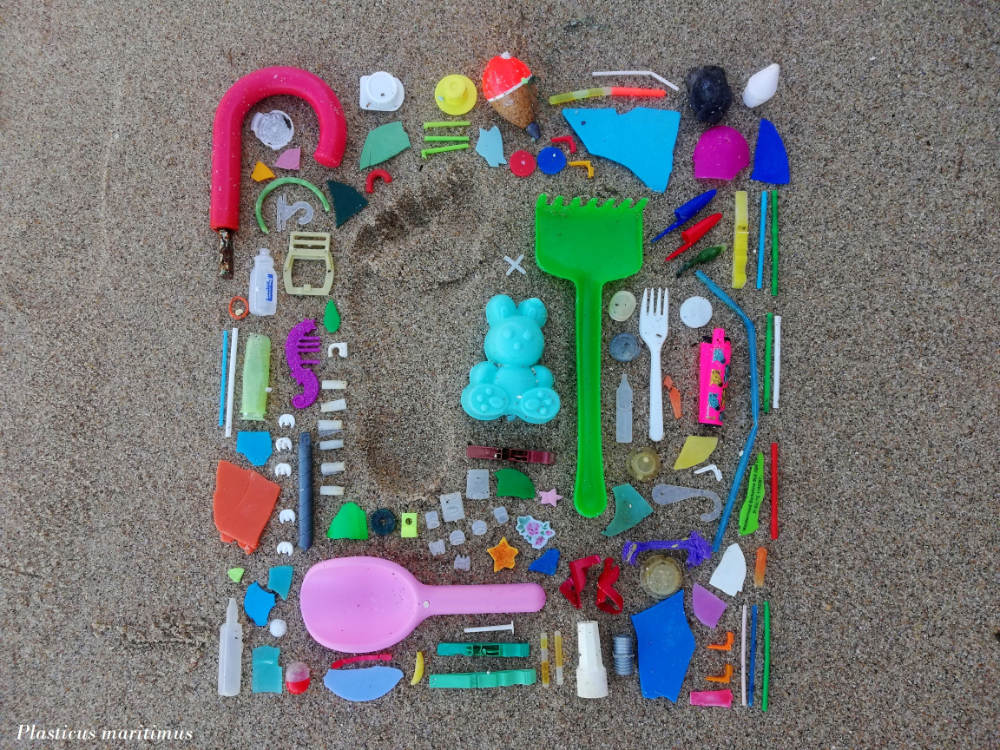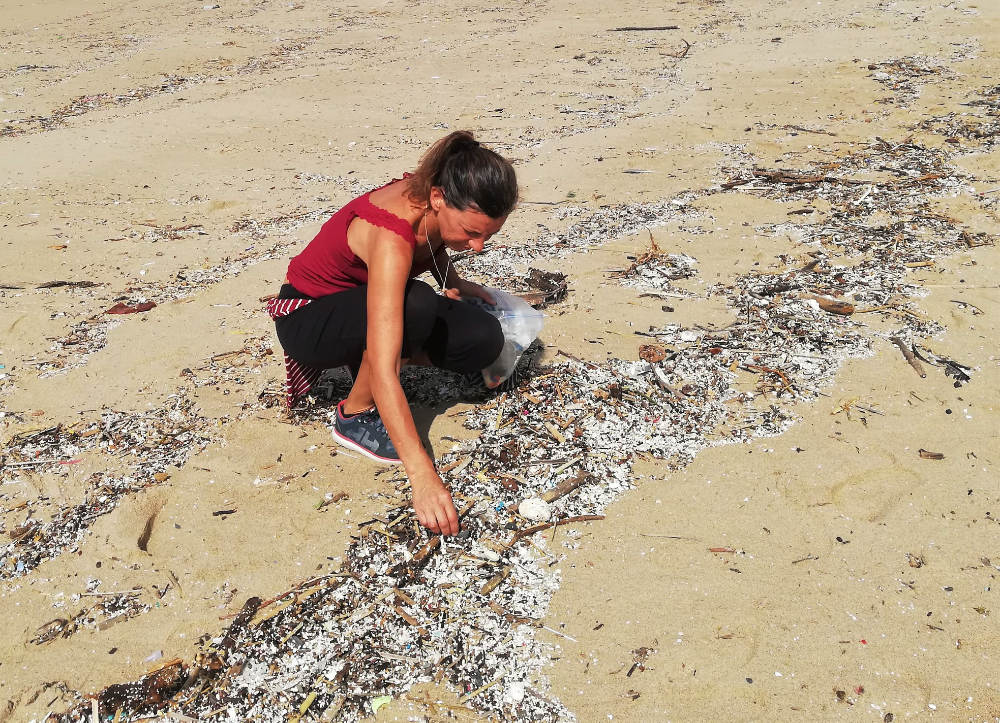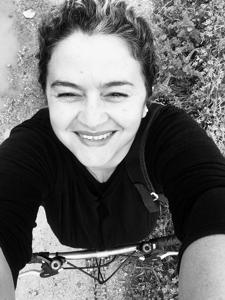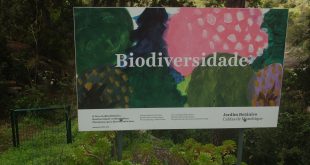Saturday 22th January 2022.
“People hear the problem, they get scared faced with this problem and do want to change, but end up considering that it’s very hard and they won’t be able to do it.” It’s to counter this way of thinking that marine biologist Ana Pêgo works to raise awareness for ocean protection in communities. At the end of the day, change is within reach for each and any one of us. Step by step, we can all be agents of change.
Known for being a woman on a mission, Ana the biologist sees marine waste as a teller of stories. Using it, Ana the activist tells her own stories, where the main protagonist has a pseudo-scientific name. It’s called Plasticus Maritimus and sounds a cry of alarm in 11 languages: “Wake up!”
Monitoring marine waste washing up on the coast has become a kind of vice that is part and parcel of Ana Pêgo’s daily life. However, over and above cleaning ‘her’ beach, Ana looks for ‘treasure’. Once a beachcomber, always a beachcomber! Taking her first steps on her own, she went on to learn a lot with the British, masters in the art of identifying ‘treasures’ below or on the surface of the sea that wash up along the coast.
Anxiety is one of the words she repeats most often to describe what she feels when talking about the trash that arrives on the beaches on a daily basis. “Some ten years ago I started to notice this new species. I started researching where all this trash was coming from and I realised that even if I was going to do nothing else for the rest of my life, it wouldn’t stop coming. I wouldn’t even succeed in saving ‘my’ beach, much less the oceans”, she says, venting her frustration. “Beachcombing (in Portuguese, ‘pentear a praia’ or, in the Coimbra area, ‘ir à catraia’) was what saved me from the anxiety of seeing trash arrive every single day”, she adds.
In between those daily walks, there came a point where she was hit like a flash by a thought: “If people aren’t coming to the beach to see this, I’ll have to take this trash to them.” It was then that she started to select and to ‘catalogue’ the waste she picks up. “I started to make collections to be able to show the mind-blowing quantity of some articles I was picking up every day”, she tells us.
With a degree in Marine Biology and Fishing from the University of Algarve, she’d been working on a research grant for several years when in 2012, she left the Maritime Laboratory at Guia, Cascais, where she’d been working for 10 years, and took the decision to dedicate herself to environmental education. Ana started to collaborate with the Calouste Gulbenkian Foundation and to give talks and workshops in schools.
It was with the idea of unveiling the mysteries of objects that at the end of 2015 she created the Plasticus Maritimus page. Sharing compositions and photographs of objects found on the beach, the page began to captivate an ever larger audience, gaining visibility.
From there it was only a small step to the publication of the book “Plasticus maritimus, uma espécie invasora” (Plasticus maritiumus, an invasive species), published by the renowned Planeta Tangerina publishing house, in 2019. Actually, Ana had been dreaming of her own field guide for a long time. The challenge of writing it with Isabel Minhós Martins (illustrations by Bernardo Carvalho) was taken up enthusiastically, but at that point Ana couldn’t have guessed the wave of success that the book would get to ride on. Today adopted as part of the National Reading Plan (PNL) in Portugal, the book has been translated into 11 languages and garnered honours and distinctions: Best non-fiction book at the Bologna Children’s Book Fair in Italy; shortlisted for the Prémio BD Amadora in the best Portuguese Graphic Artist of Illustrated Books category (2019); for the 2021 Outstanding Science Trade Book (USA); the French Ecological Book for Young Readers prize 2021 at the Festival du Livre et de la Presse d’Écologie and for the Prix Sorcières 2021 (France).
The stories behind the detritus
All of a sudden, the mission gains new directions. “While walking on the beach”, she explains, “there and then I’m already selecting what will come home with me and what will go into the waste bin”. “I particularly like these monochrome dolls from the 1960s or 1970s that used to come for free with the Olá or Rajá ice creams; bottles of vinegar or bleach that are no longer in circulation…”, she tells us.
But there are also stories of shipping containers fallen into the sea, of the buoy used to hunt swordfish in New Jersey or of the bag containing emergency drinking water used by the Russian Navy. “I started to understand that there were things coming from the United States and Canada, to watch out for the expiry dates on the packaging, for the country of origin…”, she reveals.
“At a certain point I started to find some small white crosses… later on I was to discover that they were small pieces to level azulejo tiles, and that would probably end up in the sea, through the gutters. Still on the subject of objects from building sites I have rawlplugs – jars full of rawlplugs, with silicone tips.
Cotton swabs and applicators for tampons (not to mention the single-use straws, now banned from production) are among the items that Ana Pêgo most commonly finds on her walks. And here too COVID has introduced changes. “Just today, in the space of 10 minutes, I found six face masks. Many people don’t know that single-use masks are made of plastic and synthetic fibres, of polypropylene”, she remarks.
As a rule, Ana doesn’t weigh nor count the rubbish she picks. “But when there is something out of the ordinary about an item, that’s when I do tell its story”, she explains. “In January and February”, she says, giving an example, “there was a peak of fruit stickers. There were days when, over a short period of time, I’d pick up 70, 80 of them… The sticker marking out the Maçã de Alcobaça apple won by a long stretch, followed by the one on our Rocha pears” (laughs). But, other participants in this ‘race’ were the tops, plastic insides of the bottletops and screwcaps, amongst plenty of other small (and, occasionally, mysterious) objects. In amongst all this she also found ‘treasures’: “things that have been lost at sea for a long long time, such as the Coca-Cola bottletop referring to the 1986 Football World Cup in Mexico, with the face of Veloso the football player…”, she reveals.
“But, worse than finding things that have been adrift at sea for a long time”, adds the biologist, “is finding much more recent things, for example coffee capsules”. “You also find coffee capsules on the beach?” – we ask, in disbelief. “Yep, today in fact, over the course of 10 minutes, I found two”, she decries.
Global warming and the circular economy
“What I notice in the schools is that there is an effort to create change”, Ana observes. “We have to understand that responsibility lies not only with teachers, or the headteachers of the school, it’s global, it’s about all of us.” Even so, “if the kids engage in this at 1st-grade level, they can, when well informed, turn into great activists”, she explains, “when they are older they don’t understand the littering of the beaches, in the gardens or in the street…”. “For that reason”, she adds, “I still couldn’t say with any certainty that the young people are taking this problem truly seriously. There are some young actively involved youngsters who are setting the example, and the majority are beginning to take more of an interest, also because it’s cool to go to a climate demo – and that’s great. Yet they might well on their way home go and eat at McDonalds. At that point they forget the details involved in defending the planet.”
She takes her distance from radical stances and is “not aiming to demonise plastic – because it can be rather useful; however, there are lots of things in our daily lives that we don’t need to use or for which we can find an alternative”, she reckons.
“This craze of using and throwing out has to stop, whether it’s plastic – which has the problem of being durable, and afterwards disintegrating into micro-plastics -, but also with paper.” For the biologist, these materials should be reserved for sporadic situations and possibly “be more expensive”, as a way to discourage their use.
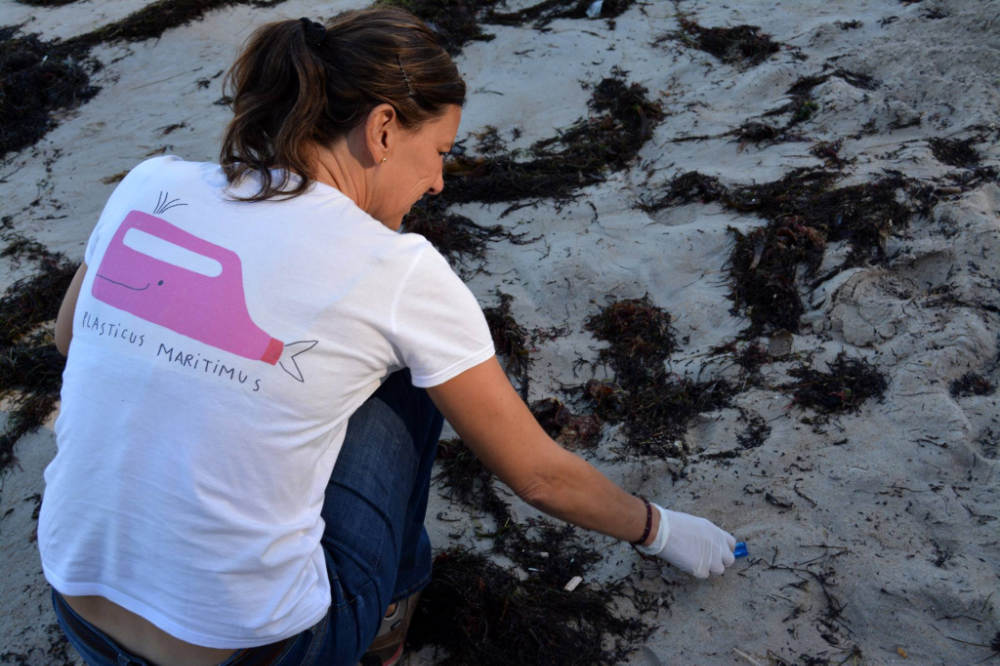
“In Europe, we’ve been talking about recycling for 25 years now yet we still have trouble separating our waste. Then, we have the countries of the developing world, where waste is thrown straight into rivers and brooks. It’s only been over the past few years that we started to become conscious of the fact that not all of our waste was treated here, but that a large part of it was being shipped to China”, she reminds us.
Even so, Ana believes that change is coming. “With the European Strategy for Reduction of the Use of Plastics, which emerged in 2018, Europe and the United States are finding themselves left with their trash on their hands!” And this obliges organisms and countries to think beyond the old maxim – produce, use, throw away – to start projecting a world where every single thing will have a use. “Will the companies and governments be capable to manage things in a way that would allow this to become reality?” – she asks.
In this circular economy, which goes against the linear economy reigning down the centuries, everything will have its use, from the crumb to the packaging. This awakening will have to start in the companies, through “taking responsibility for the waste they produce and for the packaging they choose. Those will have to be biodegradable (not simply greenwashing), compostable, recyclable, or allow for ‘refill’”, she clarifies. And the wealth of the organic material will end up having its use. “How is it possible that for years we’ve been dumping products into landfill that have so many nutrients and that could be reused with so much benefit through community organic composters?”, Ana asks.
The return of the returnable container
One of the fights she’s been involved in is about the implementation of a deposit return system (SDR) in Portugal for all packaging, including glass, together with the WWF, the Associação Zero and the Associação Sciaena.
“Companies talk in a very rose-tinted way about the circular economy, but in practice we know that they’ll do everything they can to put a brake on it because to them it makes no economic sense. It’s been much easier for them for all those years to produce plastic packaging that is single-use and then blame the common citizen for not placing the packaging in the right eco bin. What we want is the product. It’s the companies that are beholden to come up with packaging that is sufficiently enticing – or valuable – to not throw it away.”
“There is a lot of talk” – and increasingly so – “about sustainability, but many people don’t know what this word actually means. Sustainability”, she explains, “rests on three pillars: environmental (a production without recourse to chemicals), social (people are paid to provide this service), economic (its commercialisation is viable). We know that there are things that have been coming up but that to date have not yet become sustainable”, she relates.
How can we contribute?
“I’m not one to say: ‘never again in my life’, but truth be told there are products that have stopped being in my house every day! Ten years ago I stopped using shower gel and handwash and started using soap and solid shampoo”, she tells us. The next items to go were the detergents. “It’s ridiculous. Do we really need to have everything disinfected to within an inch of its life? We know that those toxic products, or the medication we take, all end up in the sea or create problems in the water treatment plants”, she stresses.
“I very rarely go to supermarkets”, she says. “It’s been years that I stopped buying produce such as meat or fish there. I don’t want to bring more plastic bags and styrofoam trays home. I do tend to eat more vegetables, but I’m no radical. When I want, or need to, I take my containers and go to the fishmongers or butcher’s”, she explains.
“I also avoid buying fruit and vegetables from the supermarket, because I manage to source produce of better quality at a grocery or from the market. I also buy the quantity I want, in the packaging I want, which are the ones I’ve brought with me. Buying the quantity that I really need is a step towards the reduction of food waste”, she argues.
When we ask Ana Pêgo about the measures she would implement in case she was given a governmental role in the Department of the Environment, she smiles, and quickly draws up a set of ideas. “Single-use plastics are at the top of the list”, she explains. “While the companies are being pressured to reduce the quantity of plastics they produce by European norms, they are starting to appear more and more at conferences wanting to join the scientists and non-governmental organisations. And it makes perfect sense for them to associate themselves with the Portuguese Anti-Plastic Pact or the European Anti-Plastic Pact. However, when I start seeing major brands that count among the biggest polluters in the world by the side of some public bodies in charge of the environment I feel that something is not right here. How can I believe in this pact?”, she asks.
The second and third measures would involve improving the transport network to discourage the use of private cars, reducing the release of carbon into the atmosphere, and ending products such as styrofoam or microplastics. “In Portugal, we still keep seeing those on supermarket shelves, in shower gels mainly, despite them having been banned in various countries.” Ana also mentions a number of good practices to overcome the waste of water and squandering of energy in the construction sector.
Despite this discourse of relative doom, she reckons that it does contain something positive. “We have entered a full revolution of the plastics sector. There are bad news, for sure, but new products have emerged too, in the area of microplastics research in particular, with work such as the one being developed by Professor Paula Sobral.”
“Ideally we would drastically reduce our consumption”. “Buying more locally”, or even nationally could contribute to the reduction of our ecological footprint. “We don’t have to be radical and say ‘I’ll never use plastics in my life ever again’, nor to change everything from one day to the next, but when we do buy something it’s a good idea to think about where this item will go at the end of its life”, she adds. While individual attitudes in themselves don’t generate change, these gestures, taken up by many citizens, serves as a pulley for lobbying and to pressure countries into adopting measures that foster well-being and security between Humankind and Nature.
Embracing the cause of marine pollution has brought her recognition from the community too. The major encouragement, she admits, came with being awarded the Prémio Quercus 2020 in the individual category. But each nomination comes as a surprise, whether the Prémio Revista Activa 2020 – Inspiring Women (Sustainability), or 3rd place in Terre de Femmes 2020 – Yves Rocher Foundation… “These nominations”, Ana explains, “even when you don’t take first prize, are forms of activism, spreading the word not only about the project or person, but also about their causes. They result in the recognition of work to date and incentivise the continuation of the fight, of our work. They get the word out on the cause, turn you into a source of inspiration, lending strength to those following in our footsteps to create the necessary changes. It’s this daily ‘pressure’ that generates changes. While we wait for governments and major companies to take the initiative for change, it is really down to us.”
 Eco123 Revista da Economia e Ecologia
Eco123 Revista da Economia e Ecologia

